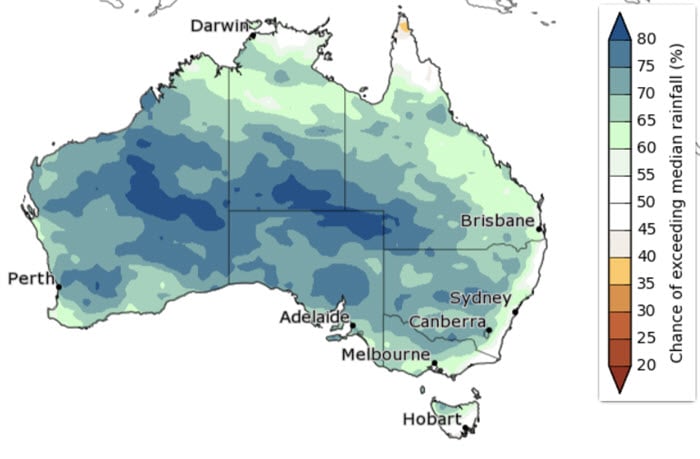Wetter winter predicted for Australia
Key points
- above average rainfall forecast for most of the country from May to July
- soil moisture deficiencies beginning to recover
- water storages remain low, due to lack of substantial run off.
Released on 16 April, the Bureau of Meteorology’s (BOM) latest climate outlook forecasts above average rainfall through the start of winter across the majority of key sheep and cattle producing regions in Australia. The outlook indicates at least a 60% chance of exceeding median rainfall throughout the country, with the exception being pockets of the Northern Territory, northern Queensland and coastal regions of the eastern states.

On the back of Australia’s second warmest summer on record, the eastern seaboard and northern parts of Australia can expect to see warmer than average temperatures from May to July, with southern Australia forecast to have an equal chance of temperatures being warmer or cooler than average.
Despite widespread rainfall seen in February and March, the latest monthly drought statement indicates long-term rainfall deficiencies are still present in areas surrounding the border of the Northern Territory and South Australia, as well as western New South Wales.
Across western and eastern New South Wales, total rainfall during April to October in the past three years was the lowest on record, severely depleting water resources and soil moistures. Widespread rainfall earlier in the year has resulted in increased soil moisture across large parts of eastern and south west Australia in March. Above average soil moisture was reported in south west Western Australia, northern parts of the Territory, southern regions of Queensland and in northern Victoria.
Most of New South Wales and Tasmania also reported above to very much above average soil moistures during March. Regions around the Kimberley and Pilbara recorded lower than average soil moistures, as did scattered regions in the southern parts of Western Australia. Improved soil moistures across the country has seen the regeneration of pastures, providing some relief to producers who have been supplementary feeding stock through the drought.
View the Bureau of Meteorology’s climate outlook for May to July 2020.
© Meat & Livestock Australia Limited, 2020



